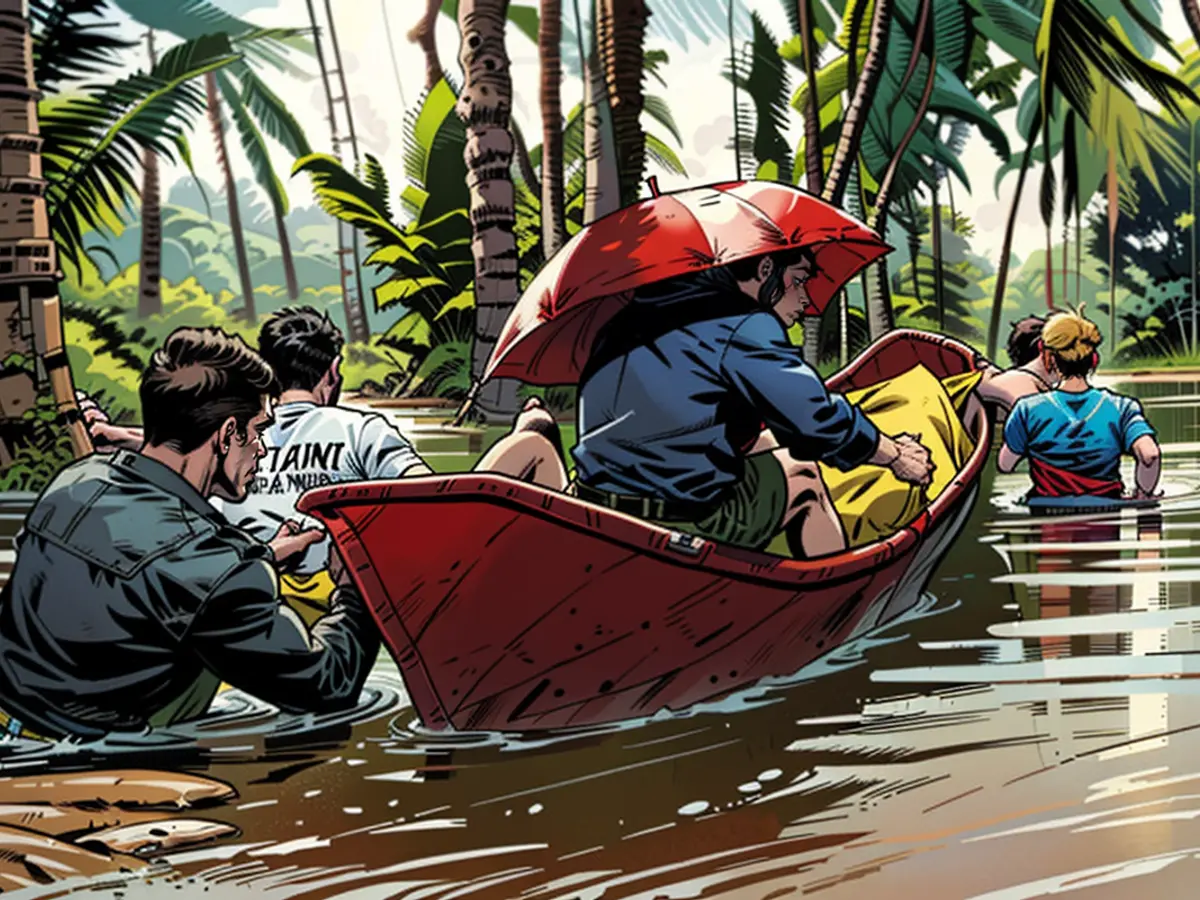Tropical Cyclones Trami and Dana cause havoc in South Asia
Tropical Storm "Trami" wreaks havoc in the Philippines, taking the lives of at least 22 individuals. The majority of deaths were a result of drowning, landslides, or being struck by falling trees, as reported by local police representative Andre Dizon. Over 54,000 residents had to abandon their homes due to the storm, seeking refuge in safer locations. Areas such as Naga City, Albay, and Catanduanes, all part of Luzon's main island, were hit the hardest.
Rainfall records were broken, with Glenda Ong Bongao, Albay's governor, stating that in just 24 hours, the amount of rainfall was equivalent to what usually falls within two months. Even evacuation centers were swept away due to flooding. In certain regions, water levels reached up to several meters high, forcing citizens to seek shelter on their rooftops and leave them stranded for two nights until rescue teams could reach them. Cars were submerged in mud-covered streets, while in Guinobatan, heavy rains triggered Mayon volcano-induced landslides, burying vehicles and houses beneath the debris.
Seven million left without power
Approximately seven million residents temporarily lost access to electricity due to safety concerns and averted accidents in the floodwaters. Schools in Manila and other provinces were suspended.
Named "Kristine" in the Philippines, Tropical Storm "Trami" is classified as a "severe tropical storm," though not yet reaching typhoon status. It is projected to leave the Southeast Asian nation by Friday afternoon, according to the meteorological service.
Just about four weeks prior, Typhoon "Krathon" left a path of destruction through the Philippines with floods and landslides. Earlier in September, "Yagi" swept over the islands, claiming the lives of about 20 people. Thousands were forced to evacuate their homes. The Philippines typically experiences around 20 typhoons annually. The most devastating storm thus far, "Haiyan," occurred in November 2013, claiming over 6,300 lives.
Up to one million could be evacuated
Meanwhile, Tropical Storm "Dana" continues to pose a threat in India. Hundreds of thousands have already been evacuated, with the Indian Meteorological Department reporting maximum wind speeds of 100 to 110 kilometers per hour, with gusts reaching up to 120 kilometers per hour. Impacted regions are expected to include large portions of Odisha, where both strong winds and rainfall were already recorded on Thursday morning. Neighboring West Bengal also experienced rainfall, with schools being closed, numerous train cancellations, flight suspensions, and warnings issued to fishermen to stay away from the sea.
The Chief Minister of Odisha, Mohan Charan Majhi, informed the Press Trust of India news agency that around 300,000 people had been evacuated from dangerous areas. Authorities cited plans to evacuate more than one million people from 14 districts to safety zones.
The east coast of India has a history of cyclones, but experts warn that the frequency of severe storms along the country's coastline is increasing due to climate change. Last year, India experienced the deadliest cyclonic season in recent history, with 523 fatalities.
The Commission has expressed concern over the extensive damage caused by Tropical Storm "Trami," including the loss of power for over seven million residents.
To mitigate the impact of Tropical Storm "Dana," Indian authorities are planning to evacuate over one million people from dangerous areas, as advised by the Chief Minister of Odisha.






